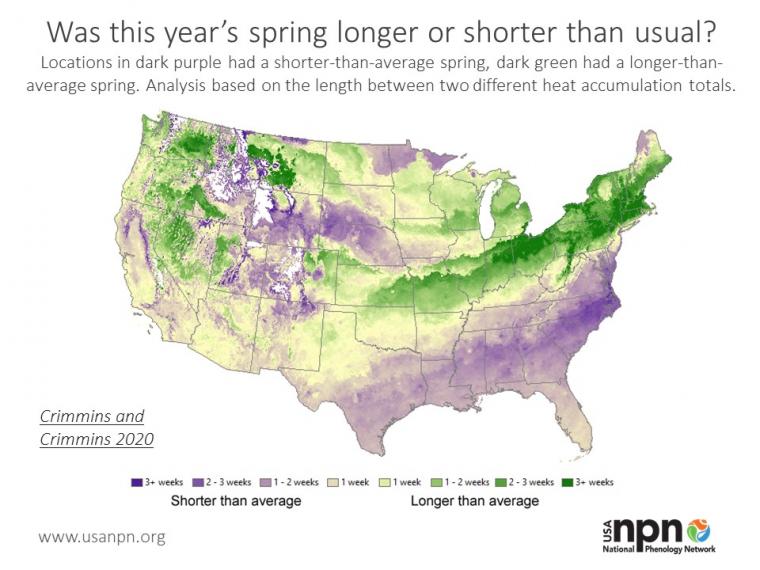



Spring leaf out is off to an early start this year in much of the Southeast. USA-NPN's Director Theresa Crimmins joined Jim Cantore and Stephanie Abrams on The Weather Channel on January 23, 2020 to talk about the implications of an early spring. Some locations are seeing spring leaf out three weeks ahead of normal (a long-term average of 1981-2010).
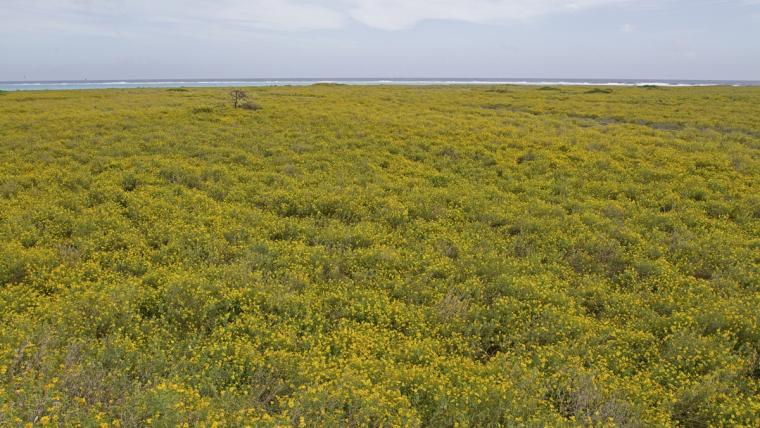
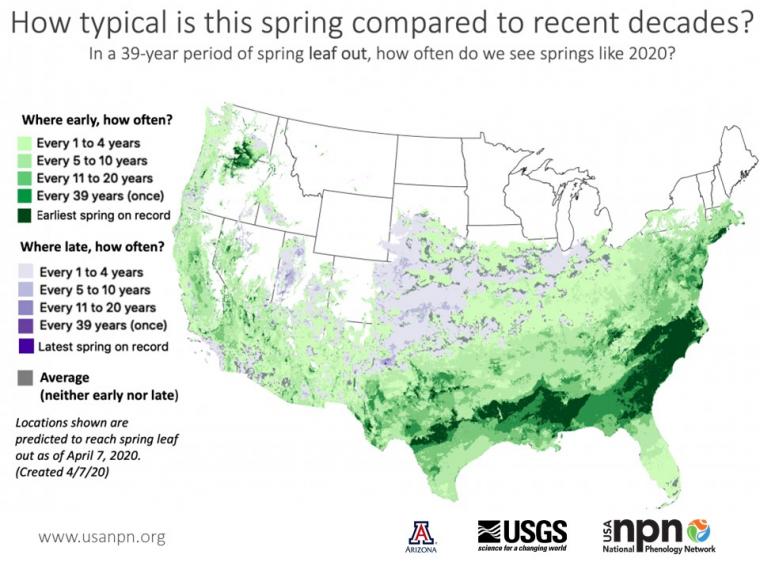

Punxsutawney Phil predicted an early spring this year! Our maps of heat accumulation provide a more scientific look at how much heat has accumulated so far this year, and what's next. Heat accumulation is ahead of schedule in the Southeast, Northeast, and parts of the West, and more typical in Midwest states.


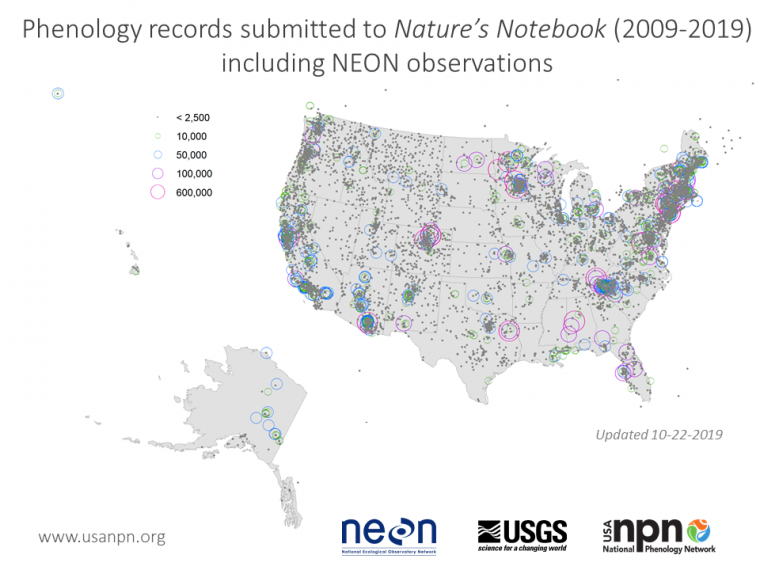
The National Ecological Observatory Network (NEON) uses USA-NPN observational protocols to track plant phenology. In October of 2019, we ingested over 2.5 million phenology data records collected on more than 5,000 individual plants observed at 78 NEON sites collected between 2013-2019 into the USA-NPN's National Phenology Database. These data are reflected in the map of observation records below and are available for visualization and download.
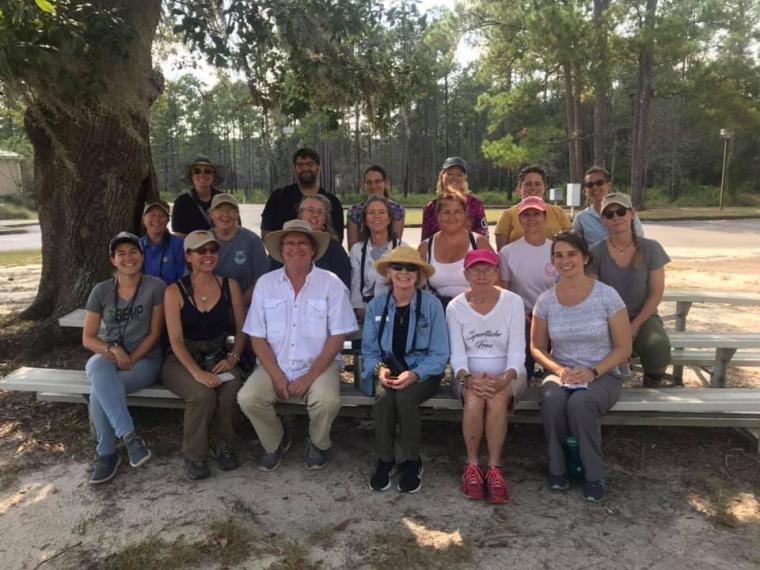
On October 4-5, 2019, the USA-NPN's National Coordinating Office (NCO) hosted the first Clinic designed specifically for Local Phenology Leaders (LPLs) working on long-term Local Phenology Programs (LPP) using Nature's Notebook. The Clinic was inspired by the gathering for the 10-year anniversary of the USA-NPN in October 2018, where many Leaders said they would welcome the opportunity to get together again in person and share id
